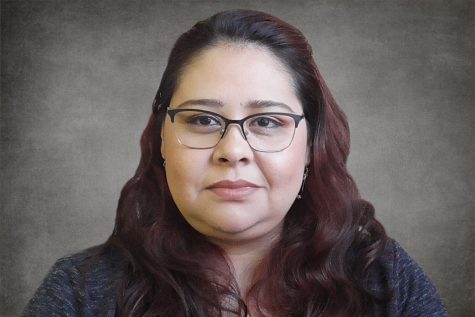$2.5 million at risk due to new funding formula
Mar 27, 2019
Due to recent changes in its funding formula, Contra Costa College’s tight budget is on the verge of unraveling and losing at least $2.5 million in 2022 if changes are not instituted.
“The new budget formula is negatively affecting the district, however the state gives us three years called ‘held harmless,’ meaning they are going to fund us using the old formula for the next three years,” Director of Business Services Mariles Magalong said.
“They are only giving us the three years grace period because we lose money based on the new formula.” Currently, the district awards CCC’s funding base on the number of Full Time Equivalent Students (FTES) registered in each semester.
However, legislators created a new performance-based funding formula in an attempt to increase the number of degrees and certificates awarded by community colleges.
Magalong said, “The current formula funds us by the number of full-time students (one student taking 15 units) that we generate. The new formula still funds us by how much FTES we generate, but also by how many new students we have and how many degrees and certificates we award. It’s not just FTES, but other factors as well.”
CCC is not the only school in the Contra Costa Community College District poised to take a pinch.
It is estimated that Contra Costa College will lose about $2.5 million of its state funding, followed by Diablo Valley College with $7.7 million and Los Medanos College with $1.2 million.
United Faculty Executive Director Jeffrey Michels said funds based on how many students succeed will only end up putting more resources into those students that are most likely to succeed. That diverts resources from students that seem less likely to succeed which ironically are the students who need the most help.
“This is an extremely complicated formula that tries to reward colleges that have better outcomes,” Michels said. “They need to invest more money in colleges that are not doing as well and help them do better — not take money away from them to give the highest performing colleges.
“The way they decided which students have financial need is based on eligibility for Pell Grants and other financial aid and given in areas like ours in the Bay Area where housing is so expensive,” Michels said. “A lot of Students don’t qualify for some kinds of financial aid because they earn more money, but after paying for housing and transportation, they are below the poverty line.”
Dean of Institutional Effectiveness and Equity Mayra Padilla said CCC’s enrollment has been decreasing over the past year. To remedy this, a stronger focus on outreach and enrollment management has been adopted.
“Our school is smaller in terms of how many students we serve. We have a demographic that has stopped growing,” she said. “Our sister colleges have growth because they are in a part of the county that is still able to support additional people. Because our population is smaller, our budget is smaller.”
In order to balance the budget, CCC has been focused on increasing enrollment and student retention. Recently, the creation of programs that serve minorities created a small increase in enrollment.
“The Student Equity and Achievement Grant is about $526,000 roughly and that money goes to providing resources to support our Latino, Native American, African- American, LGBTQ, homeless, veterans and foster youth students,” Dr. Padilla said.
“We have to look to see how they’re performing in college and if they’re showing a disproportionate impact, then we can use some of that money to support them.” Padilla also said CCC is expected to create a new infrastructure for the Guided Pathways initiative.


